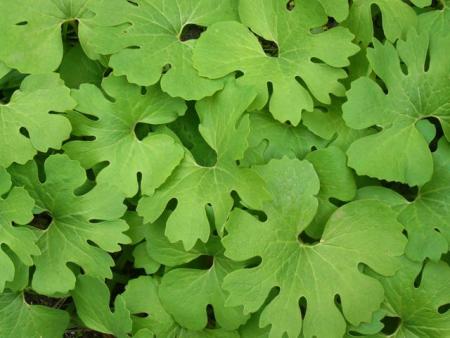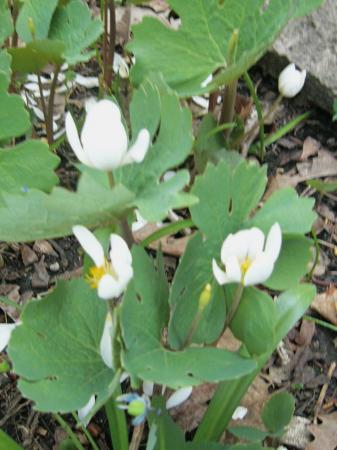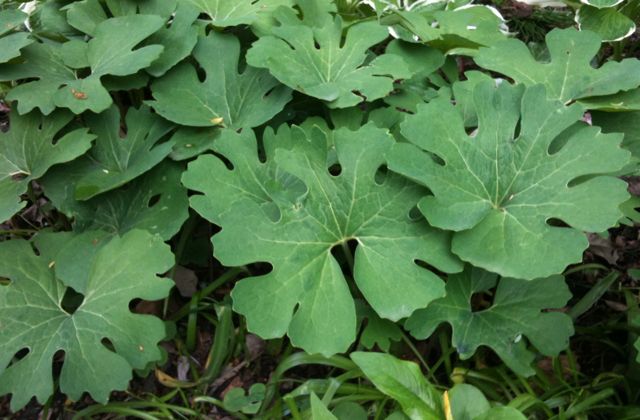Bloodroot
 I suspect that the scary-sounding name of Sanguinaria canadensis, a member of the poppy family, is the main reason you don't see this shade perennial much in gardens or even in nurseries. I found it listed in some native plant guides as yet another candidate for my shady, moist woodlands area, and finally got some from an elderly greenhouse worker in Chicago who brought me some from her own garden. The name, however, comes from the fact that Native Americans used the root to make a red dye. You could do the same, but be careful to wash your hands after handling, because the roots are unpleasant and even poisonous to eat, containing various alkaloids.
I suspect that the scary-sounding name of Sanguinaria canadensis, a member of the poppy family, is the main reason you don't see this shade perennial much in gardens or even in nurseries. I found it listed in some native plant guides as yet another candidate for my shady, moist woodlands area, and finally got some from an elderly greenhouse worker in Chicago who brought me some from her own garden. The name, however, comes from the fact that Native Americans used the root to make a red dye. You could do the same, but be careful to wash your hands after handling, because the roots are unpleasant and even poisonous to eat, containing various alkaloids.

For more about native plants for the Midwest, especially those that do well in shade/moist areas, see the "book" on this website, Gardening with Native Plants in Shady Evanston.

Gallery:
- Log in to post comments
